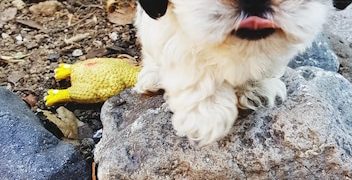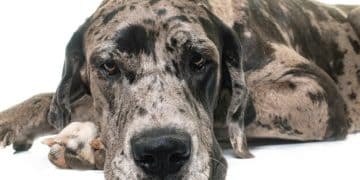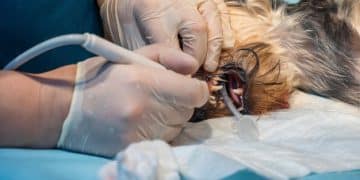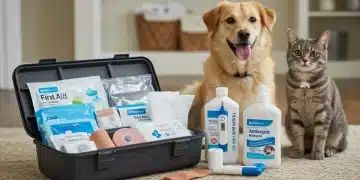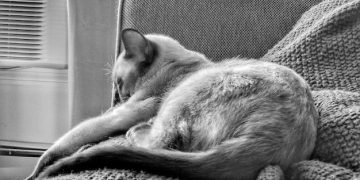Glaucoma in Pets: Symptoms, Prevention, and Care for Your Beloved Animals
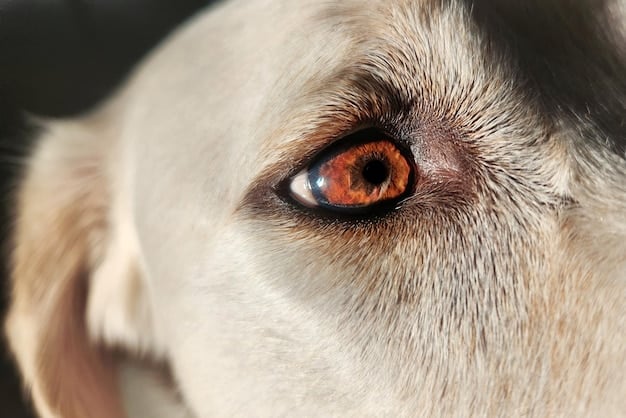
Glaucoma in pets is a serious condition that can lead to blindness if not detected and treated promptly, requiring pet owners to recognize symptoms like eye redness, cloudiness, and changes in behavior, and seek immediate veterinary care for effective management.
Is your furry friend showing signs of discomfort in their eyes? Understanding glaucoma in pets: recognizing the symptoms and preventing vision loss is crucial for maintaining their health and happiness; early detection and intervention can make all the difference in preserving your pet’s sight.
Understanding Glaucoma in Pets
Glaucoma is a condition characterized by increased pressure within the eye, and it’s as concerning for our pets as it is for humans. This elevated intraocular pressure (IOP) can damage the optic nerve, leading to irreversible vision loss if left untreated.
Recognizing the causes and risk factors of glaucoma helps pet owners take proactive measures to protect their animals’ eyesight. Whether it’s primary or secondary glaucoma, understanding this condition is the first step toward prevention and effective management.
Primary vs. Secondary Glaucoma
Glaucoma in pets can be classified into two main types: primary and secondary. Understanding the distinction between these types is essential for proper diagnosis and treatment.
- Primary Glaucoma: This type is hereditary and occurs due to abnormalities in the eye’s drainage structures, preventing proper fluid outflow. Breeds predisposed to primary glaucoma include Cocker Spaniels, Basset Hounds, and Arctic breeds like Huskies.
- Secondary Glaucoma: Secondary glaucoma occurs as a result of other eye conditions or diseases that obstruct the eye’s drainage system. Common causes include cataracts, lens luxation (displacement of the lens), uveitis (inflammation inside the eye), and eye tumors.
- Importance of Differentiation: Identifying whether glaucoma is primary or secondary is essential because the underlying cause significantly impacts the treatment strategy. Primary glaucoma often requires long-term management, while secondary glaucoma may be resolved by addressing the root cause.
Both primary and secondary glaucoma require prompt diagnosis and treatment to prevent permanent vision loss.

Recognizing the Symptoms of Glaucoma
Early detection of glaucoma in pets is vital for preventing irreversible vision loss; recognizing the subtle signs and symptoms can prompt timely veterinary intervention. Prompt treatment can slow the progression of the disease and preserve your pet’s eyesight.
Symptoms can vary from subtle to severe, depending on the stage and type of glaucoma. Keep an eye out for any changes in your pet’s behavior or physical appearance could indicate glaucoma.
Common Symptoms of Glaucoma in Pets
Glaucoma can manifest in various ways, and symptoms may differ slightly between animals. Generally, here are the most common signs to watch for:
- Eye Redness: The white part of the eye (sclera) may appear red or bloodshot due to increased pressure and inflammation. This is often one of the first noticeable signs.
- Cloudy or Bluish Cornea: The cornea, the clear outer layer of the eye, can become cloudy or take on a bluish tint. This occurs as fluid builds up within the cornea due to increased intraocular pressure.
- Enlarged Eye: In chronic glaucoma, the affected eye may appear larger than the other. This enlargement, known as buphthalmos, happens because the increased pressure stretches the eye over time.
- Pupil Dilation or Unresponsiveness: The pupil may be dilated (enlarged) and may not respond to light as it normally would. This can be a subtle sign but is an important indicator of glaucoma.
These are just a few of the symptoms that might arise. Being vigilant and knowing what to look for can significantly improve the outcome for your pet.
Diagnosing Glaucoma in Pets
Diagnosing glaucoma in pets requires a thorough ophthalmic examination by a veterinarian, and accurate diagnosis is crucial for initiating the appropriate treatment plan. If your pet shows any potential signs of glaucoma, prompt veterinary attention is essential.
The diagnostic process involves several key steps to confirm the condition and rule out other potential causes. Early and accurate diagnosis provides the best chance for effective management and vision preservation.
Diagnostic Procedures
Veterinarians use a combination of techniques and tools to diagnose glaucoma accurately. Here are the primary methods used during an ophthalmic examination:
- Tonometry: This test measures the intraocular pressure (IOP) inside the eye, and is the most critical diagnostic step for glaucoma. A Tonometer is used to gently measure IOP, High IOP readings confirm glaucoma.
- Gonioscopy: This procedure examines the drainage angle of the eye, where fluid normally flows out. It helps determine whether glaucoma is primary (due to abnormalities in the drainage angle) or secondary (caused by other conditions blocking the drainage).
- Ophthalmoscopy: This involves using an ophthalmoscope to examine the back of the eye, including the optic nerve and retina. Damage to the optic nerve is a key sign of glaucoma and is assessed during this examination.
With these tests, vets can accurately diagnose glaucoma, and provide the best course of action.
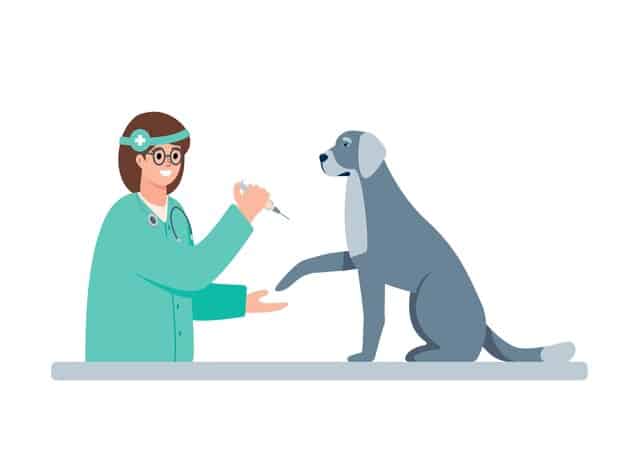
Treatment Options for Glaucoma
Treating glaucoma in pets primarily aims to lower intraocular pressure (IOP) and alleviate discomfort, and this can be achieved through various medical and surgical interventions, depending on the severity and type of glaucoma.
Early intervention is key to preserving vision and preventing further damage to the optic nerve. A well-coordinated treatment plan can significantly improve your pet’s quality of life.
Medical Management
Medical management involves using medications to lower IOP and manage the symptoms of glaucoma; these treatments can help control the condition and improve your pet’s comfort.
Here are some of the common medications used in glaucoma treatment:
- Prostaglandin Analogs: These drugs increase fluid outflow from the eye, effectively reducing IOP. They are often used as a first-line treatment for glaucoma.
- Carbonic Anhydrase Inhibitors (CAIs): CAIs reduce fluid production within the eye, helping to lower IOP. They can be administered as eye drops or oral medications.
- Beta-Blockers: These medications also decrease fluid production in the eye, contributing to IOP reduction; they are typically used as eye drops.
Regular monitoring and adjustments to the medication regimen may be needed to achieve optimal IOP control and minimize side effects.
Surgical Interventions for Glaucoma
In cases where medical management is insufficient or ineffective, surgical interventions may be necessary to control glaucoma; these procedures aim to improve fluid drainage or reduce fluid production within the eye.
Below are some common surgical options for glaucoma in pets:
- Gonioimplantation: This procedure involves placing a small drainage implant in the eye to facilitate fluid outflow and reduce IOP; it is often the primary surgical treatment.
- Cycloablation: Cycloablation reduces fluid production by destroying some of the cells that produce fluid inside the eye which consequently reduce the IOP. It is generally reserved for cases where vision is already lost or severely compromised.
Ultimately, the choice of surgical procedure depends on the individual case and factors such as the type of glaucoma, the pet’s overall health, and the surgeon’s expertise.
Preventing Glaucoma and Maintaining Eye Health
While preventing glaucoma entirely may not always be possible, there are several steps pet owners can take to minimize the risk and maintain their pet’s eye health. Proactive care and regular check-ups are essential for early detection and management.
A comprehensive approach to eye health can significantly improve your pet’s quality of life. Here are some prevention and maintenance tips:
Regular Veterinary Check-ups
Routine veterinary examinations are crucial for detecting early signs of glaucoma or other eye conditions. Veterinarians can perform thorough eye exams to identify potential problems and recommend appropriate interventions.
Genetic Screening and Responsible Breeding
For breeds predisposed to primary glaucoma, genetic screening can help identify carriers and affected individuals. Responsible breeding practices, such as avoiding breeding affected animals, can reduce the incidence of hereditary glaucoma.
Diet and Lifestyle
Providing a balanced diet rich in antioxidants and essential nutrients can support overall eye health. Antioxidants help protect the eyes from oxidative damage, which can contribute to glaucoma development. Regular exercise and a healthy lifestyle can also promote general well-being and reduce the risk of various health issues, including eye problems.
Implementing these measures can help ensure your pet enjoys a lifetime of healthy vision.
| Key Point | Brief Description |
|---|---|
| 👁️ Early Detection | Recognizing early symptoms like redness or cloudiness is crucial for timely intervention. |
| 🩺 Regular Check-ups | Veterinary exams, including tonometry and gonioscopy, are vital for diagnosis. |
| 💊 Medical Management | Medications like prostaglandin analogs and carbonic anhydrase inhibitors can lower IOP. |
| 🔪 Surgical Options | Procedures like gonioimplantation and cycloablation may be necessary if medication is insufficient. |
Frequently Asked Questions
Glaucoma in pets is a condition characterized by increased pressure inside the eye, which can damage the optic nerve and lead to blindness if left untreated. It can be primary (hereditary) or secondary (caused by other eye issues).
Common symptoms include eye redness, a cloudy or bluish cornea, an enlarged eye, pupil dilation, and signs of pain or discomfort. Changes in behavior, such as reluctance to move around, are also indicators.
Diagnosis involves an ophthalmic exam, including tonometry to measure eye pressure, gonioscopy to examine drainage angles, and ophthalmoscopy to assess the optic nerve. These tests help confirm glaucoma and identify its cause.
Treatment options include medications to lower eye pressure, such as prostaglandin analogs and carbonic anhydrase inhibitors. Surgical interventions like gonioimplantation or cycloablation may be necessary if medication isn’t enough.
While not always preventable, regular veterinary check-ups, genetic screening for predisposed breeds, and a balanced diet can help maintain eye health. Early detection and intervention are crucial to slow progression.
Conclusion
Protecting your pet’s vision from glaucoma requires vigilance, proactive care, and regular veterinary check-ups with an eye on understanding glaucoma in pets: recognizing the symptoms and preventing vision loss. By familiarizing yourself with the signs and symptoms, prompt and appropriate veterinary care can help manage this condition effectively, ensuring your furry friend enjoys a happy and healthy life.
